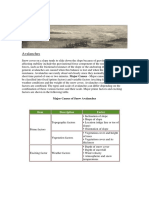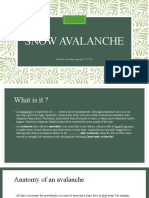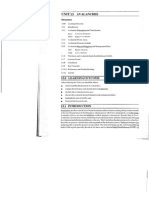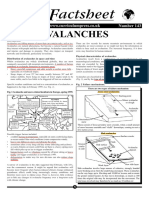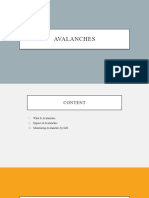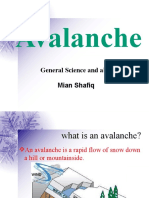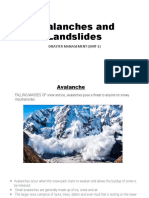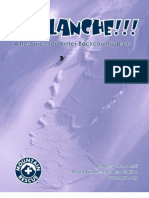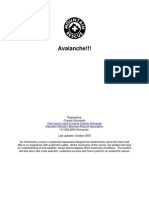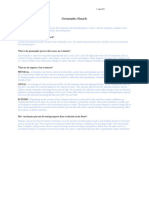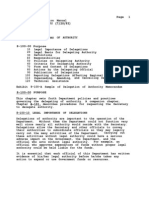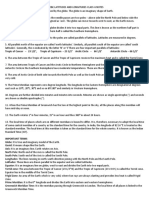0% found this document useful (0 votes)
38 views6 pagesAvalanche Safety and Prevention
Avalanches are caused by the accumulation and bonding of snow layers, becoming unstable due to weak bonds and sudden environmental changes. The ideal slope for avalanches is between 30-40 degrees, and preventive measures include monitoring, controlled detonations, and avoiding hazardous areas. There are two main types of avalanches: loose snow avalanches, which start from a single point, and slab avalanches, which are more dangerous and involve larger cohesive snow layers.
Uploaded by
18walesiCopyright
© © All Rights Reserved
We take content rights seriously. If you suspect this is your content, claim it here.
Available Formats
Download as PDF, TXT or read online on Scribd
0% found this document useful (0 votes)
38 views6 pagesAvalanche Safety and Prevention
Avalanches are caused by the accumulation and bonding of snow layers, becoming unstable due to weak bonds and sudden environmental changes. The ideal slope for avalanches is between 30-40 degrees, and preventive measures include monitoring, controlled detonations, and avoiding hazardous areas. There are two main types of avalanches: loose snow avalanches, which start from a single point, and slab avalanches, which are more dangerous and involve larger cohesive snow layers.
Uploaded by
18walesiCopyright
© © All Rights Reserved
We take content rights seriously. If you suspect this is your content, claim it here.
Available Formats
Download as PDF, TXT or read online on Scribd
/ 6



